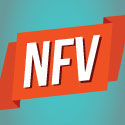Versa is developing technology that enables virtual network functions to run anywhere they can find compute resources.

Versa Networks is developing NFV technology that will allow virtual network functions to run anywhere where compute resources are available -- on customer premises equipment, in a carrier data center or in the cloud.
For network operators keen to break the tie between hardware and software and to introduce as much flexibility into their operations as possible, that sounds like a development of some note. If it works.
Funded in 2012 with $14.35 million from Sequoia Capital and founded by Juniper Networks Inc. (NYSE: JNPR) veterans, Versa Networks has been relatively quiet about its R&D. Light Reading discovered in February 2014 that Versa is working on SDN technology to create end-end-networks spanning wide area networks and data centers that can be managed using uniform tools. (See UNVEILED! California's Hottest SDN Startup, Versa Networks.)
Since then, Versa has been busy in the background but has clearly been making progress and inroads with some big names. (More on this later -- see Orange Unveils NFV-Based Offering for SMBs.)
Fast-forward to this month, when Versa product VP Darrell Long presented his company's vision for the role and deployment of virtual network functions (VNFs) at the NFV World Congress.
So what's the company's vision for NFV? The Versa man compared NFV to Henry Ford's invention of the assembly line. Initially, automobiles were handmade, expensive and relatively rare. Mass assembly techniques made them ubiquitous and less expensive.
NFV will bring the same kind of revolution to managed services, Long said. Providers today deliver managed services using equipment delivered to customers' premises. Bringing a managed service online requires engagement with multiple vendors and is expensive in capex and opex terms. New services require a truck roll and profit margins are low.
NFV enables a more cloud-oriented approach, boosting opportunities for service providers to achieve a tighter relationship with the customer, at the same time leveraging software and COTS (commercial off-the-shelf) server systems, Long said.
VNFs should be delivered anywhere where sufficient compute resources are available to run them: in the public cloud, in a managed data center, in a service provider network or colocation facility or on customer premises facilities. VNFs need to be "delivery system agnostic," able to run on virtual machines, in containers, on bare metal servers, or in another operator's data center without cloud management or automation. They need to be architected for reliability, robustness and high availability, Long said.
VNFs need to be independent of the computing resources available yet achieve high performance by taking full advantage of the multitasking opportunities enabled by the underlying hardware architecture. And VNFs need to support multitenancy, either sharing resources or dedicating resources to each particular tenant, as well as supporting the ability to scale in response to either planned or unplanned traffic spikes in real time. And, of course, VNFs from different vendors need to be able to interoperate.
"It's a more cloud-oriented self-service approach to delivering your service," said Long, noting that VNFs can be deployed quickly and programmatically, in minutes rather than weeks.
Figure 1: In the Spotlight  Product VP Darrell Long describes how NFV should work.
Product VP Darrell Long describes how NFV should work.
The result, in theory, will help put service providers on the path to profitability, Long said. They'll be able to provide efficient and flexible VNF-based services, cut capex and opex, boost profits and offer better customer value. That's quite the shopping list.
What, then, is Versa doing to support this vision? Long was less forthcoming about product development details. "This is directionally some of the things we're doing. I wouldn't say this is everything we're doing."
It has clearly been doing something, though. It is one of a number of vendors working with Orange Business Services on an NFV-enabled service for SMBs, announced in March. EasyConnect, which has already been demonstrated on a live network, will allow customers to set up and maintain an IP VPN, firewalls, web content filtering and other services through what Orange calls a "self-care portal." Juniper is providing its Contrail SDN controller, firewall tools and web filtering, while Versa is working with Orange on the development of VNF capabilities, along with UBiqube Plc . (See Orange Unveils NFV-Based Offering for SMBs.)
Want to know more about NFV and its role in service provider strategies? This will be just one of the many topics covered at Light Reading's second Big Telecom Event on June 9-10 in Chicago. Get yourself registered today or get left behind!
The "run anywhere" capabilities Versa is developing could put the startup ahead of the pack: Companies such as Overture Networks Inc. and HP Inc. (NYSE: HPQ) are still talking about shipping VNFs bundled with standard hardware products, although both companies also make VNFs available as separate software. (See Overture Adds Hardware to Its NFV Pitch, HP Launches NFV-in-a-Box, Overture Claims NFV Performance Benchmark, Overture Builds on NFV Foundation and Overture Trials NFV Software With Hidden Punch.)
The hardware-plus-VNFs approach is, in turn, a step ahead of the existing state of CPE: With standardized servers and switches, you only need one truck roll, after which the functionality can be configured remotely.
Versa's technology apparently takes things one step beyond, adding still more flexibility. Timing, though, is key in this market, where new capabilities are being introduced much faster than ever before. Versa might need to unveil more detailed progress soon if it's to capture and hold the attention of the network operators being courted by the biggest names in networking.
— Mitch Wagner, 


 , West Coast Bureau Chief, Light Reading. Got a tip about SDN or NFV? Send it to [email protected].
, West Coast Bureau Chief, Light Reading. Got a tip about SDN or NFV? Send it to [email protected].
About the Author(s)
You May Also Like











